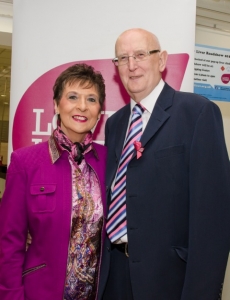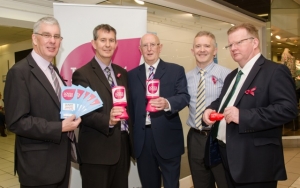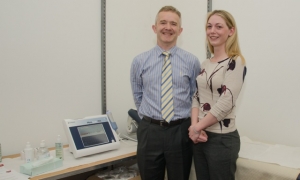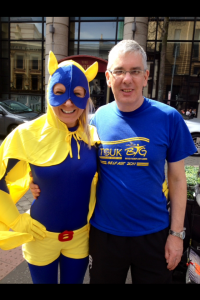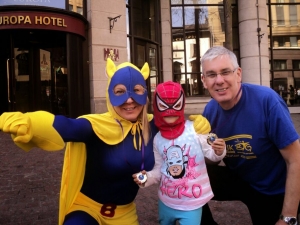Love Your Liver – a first for Northern Ireland
January is Love Your Liver month on the other side of the Irish Sea. In January of this year the British Liver Trust’s travelling pop-up clinic screened 800 people in 8 different locations in Great Britain. 21% of these, following a fibroscan, were referred to their GPs.
It has been a couple of years now since Gordon Cave first suggested that we try to bring the roadshow to Northern Ireland. From then on he has worked steadily to keep us focused on making this happen. Which it did – on Tuesday of last week.
On 20th May the British Liver Trust ran their first Love Your Liver roadshow in Northern Ireland at CastleCourt Shopping Centre. A screening area where members of the public could answer an online questionnaire was set up on the ground floor close to the Royal Avenue entrance. The fibroscanning was done in an empty retail unit on the second floor. Here those referred had an opportunity to talk to one of three consultants from the RVH who were present at different times of the day.
Members of the RVH Liver Support Group, alongside friends and family, acted as volunteers, handing out flyers, explaining the purpose of the road show to passers-by and chatting to people in the queues for screening and fibroscanning. We were delighted that that Dr. Paul Darragh of the British Medical Association, Northern Ireland dropped by in the afternoon and that Health Minister Mr. Edwin Poots M.L.A. visited in the morning. Both men took a very keen interest in the raodshow, chatting to a wide range of medical professionals, volunteers and members of the public. The Minister was also given a clean bill of health after he very willingly sat through the screening process.
At the end of the day, 112 people had been screened, 60 had been fibroscanned and 37 had been referred for liver function tests or further action. After 16 years as a charity working mainly in support of those dealing with liver disease, it was a privilege for the RVH Liver Support group to be working on a project aimed at preventing others from ever having to do so.
We are indebted to many people, without whom it would not have been such a successful health promotion day:
· – to Andrew Langford, CEO of the British Liver Trust, for his direction on the day and his invaluable contribution to all the pre-planning;
· – to Carol Hazell and Sandra Cooper-Keen of the British Liver Trust for conducting the screening so skilfully and so sensitively;
· – to Carolyn Adgey, RVH registrar, who did all the fibroscanning;
· – to Drs. McDougall, Cadden and Cash for giving of their time to speak discreetly to members of the public who had been fibroscanned;
· – to Binder Tohani and the management of CastleCourt for allowing us to stage the event and for calmly directing us through all the administration;
· – to Dave Pettard for photographs;
· – to Vincent Kearney for making sure everything was delivered and returned on time;
· – and to RVH LSG volunteers for their sensitive and interested engagement with everyone they dealt with..
All bar one of these volunteers knows about the trauma of liver disease, either as a patient or as a carer. While we will never know the full impact of the Love Your Liver Campaign on the lives of those who visited the Belfast pop-up clinic, if only one person is spared what these volunteers and their families have gone through, the day will have been more than worthwhile.
**** See thanks and photos in ‘From The Chairman’ section of this website ****
[/fusion_builder_column][/fusion_builder_row][/fusion_builder_container]




